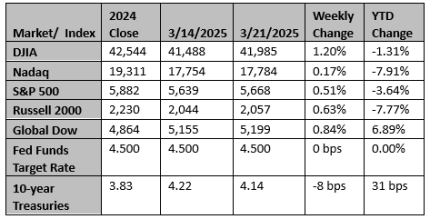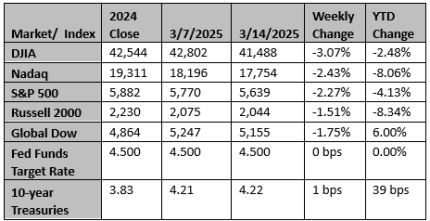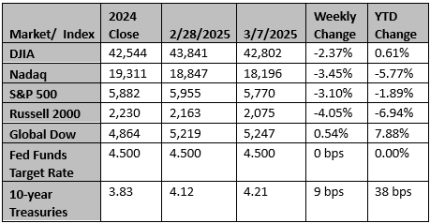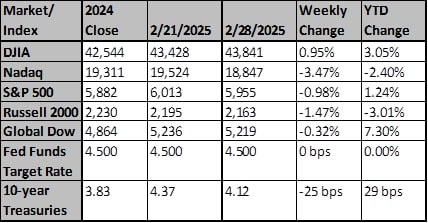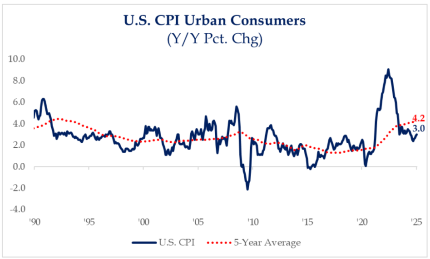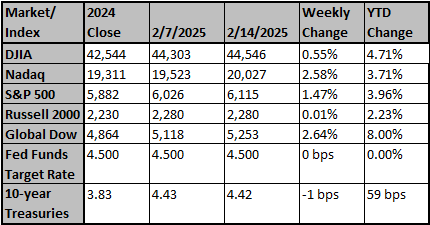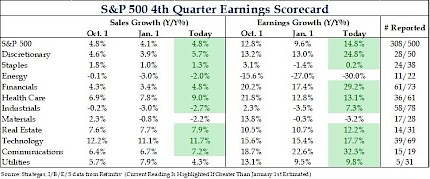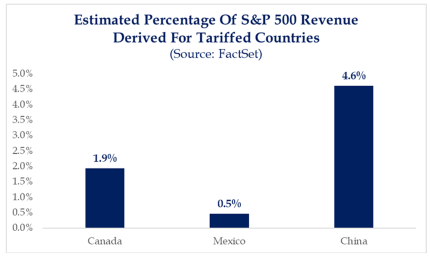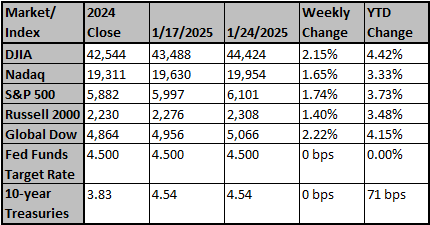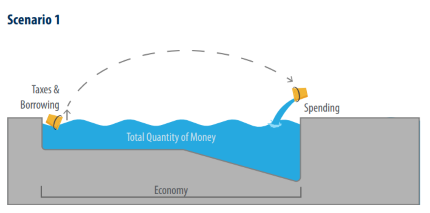The volatile risk-off backdrop has continued. Economic concerns have surged with the U.S.-led trade war moving into high gear. The current turbulence may yet provide a good buying opportunity in risk asset markets but probably from lower than current levels. Whether equity markets rebound or continue sinking hinges on the outcome of the trade war and whether the endpoint is: a) meaningful protectionism that soon undermines the global economic expansion, or perhaps continued high uncertainty that… View More
Authors
Post 41 to 50 of 595
It is true that tariffs are a tax. It is also true that tariff policies have been volatile…on and off again…different carve outs…different countries…phone calls that change things. All this clearly has an impact on the market. So, we are not surprised to see stock market volatility. However, it isn’t all about tariffs. Many major models of overall stock market valuation show that the market is expensive. The so-called Buffet Indicator, which measures the market cap of the S&P 500 … View More
Is the US already in recession? Probably not. But in the first quarter, real GDP is very likely to have a minus sign in front of it. Yes, a negative reading for real growth! Even before Friday there were some troubling signs. Retail sales fell 0.9% in January while housing starts dropped 9.8%. The personal saving rate hit a new post-COVID low in the fourth quarter, existing home sales declined 4.9% for the month and, with pending home sales (contracts on existing homes) down, February will like… View More
Global financial markets have hit a rough patch as the cumulative impact of President Trump’s trade and related economic threats are fueling concerns that he will diverge from the pro-growth script that he initially followed during his first term. Then, the positive economic elements arrived first, primarily tax cuts, before the negative actions followed, i.e., a brief trade war. These negative actions caused a downturn in global trade and slowed the U.S. economy and corporate profits. The U.… View More
We don’t want to over-emphasize the importance of one data point, but the data over the last several months suggest that the progress toward the Fed’s much-vaunted goal of 2% inflation has slowed. In truth, the 2% target is a widely agreed-upon fiction among both policymakers and market participants themselves borne out of a New Zealand central bank paper from the late 1980s. Ironically, the target was only invoked when inflation was serially below 2% in the aftermath of the GFC. Since the … View More
There is nothing easy about forecasting financial markets, and when combined with a President who changes his mind in a matter of moments on policies that may a have lasting impact on sectors, industries, or specific companies, it becomes that much more challenging. Three weeks into Trump 2.0 we felt it was as good a time as any to review our sector recommendations. We feel being overweight the Financials, Industrials, Utilities and Energy sectors remains a prudent strategy. The deregulation st… View More
With the fourth quarter reporting season more than 60% reported, both earnings and sales growth have been quite strong. EPS growth is expected to be 14.8%, with 9 of the 11 sectors exceeding estimates from the start of the quarter. Sales growth is also expected to be strong overall with estimates sitting at 4.8%, with 9 of 11 sectors currently exceeding estimates from the beginning of the reporting season. While there is still 40% of the index left to report, there are few that could really swa… View More
Following 100 basis points in rate cuts through the back half of 2024, the Fed started 2025 with a pause, placing itself in wait and see mode for the foreseeable future. Starting with today’s FOMC statement, there were a few language changes worthy of note. On the employment front, prior comments that labor market conditions have eased and the unemployment rate has risen, now state that the unemployment rate has stabilized and labor market conditions “remain solid.” With regards to inflat… View More
Nvidia Corp. and ASML Holding NV shares plunged early Monday as Chinese artificial intelligence startup DeepSeek appeared to provide comparable performance to Western chatbots at a fraction of the price. Nvidia shares fell about 9% in premarket trading, while ASML’s shares dropped as much as 11% to €626.20 apiece in Amsterdam trading, the biggest intraday drop since Oct. 15. The technology heavy Nasdaq 100 futures index also slumped. The latest AI model of DeepSeek, released last week, is … View More
Is Government Spending Inflationary? The stimulus bills approved by Congress starting in 2020 led to the largest surge in government spending in history, coinciding with a sharp rise in inflation. This has led many to assume that government spending itself caused inflation. But is that assumption correct? In today's "Three on Thursday," we explore whether government spending inherently leads to inflation. Milton Friedman famously stated, "Inflation is always and everywhere a monetary phenome… View More


